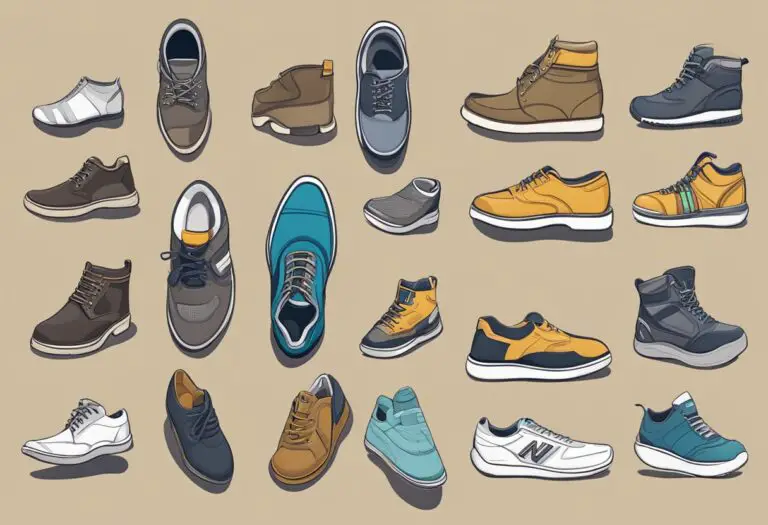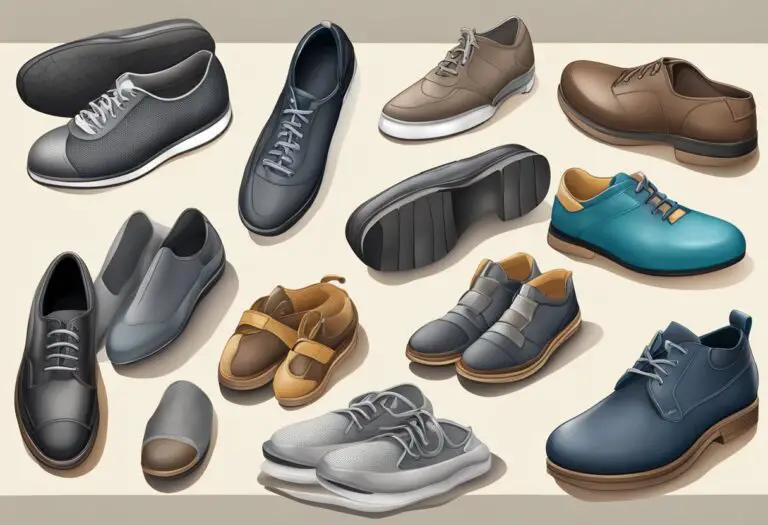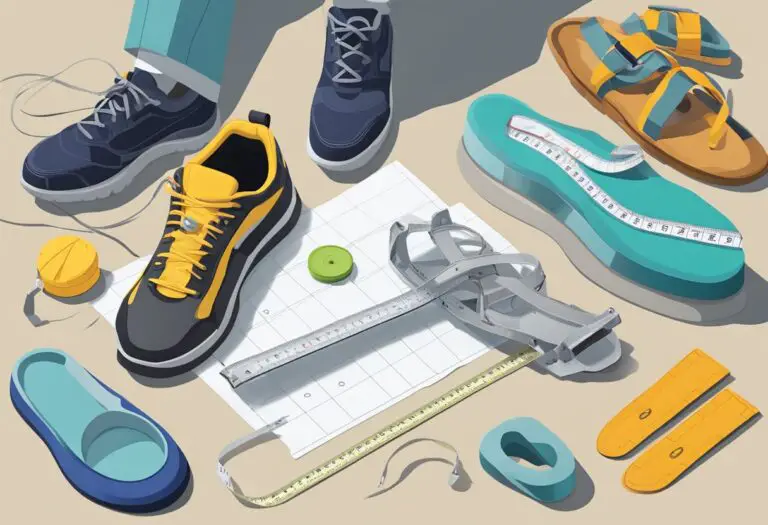How do I determine the appropriate level of support and cushioning in shoes?
How to Determine the Right Level of Support and Cushioning in Shoes
Determining the appropriate level of support and cushioning in shoes can be a challenging task, especially for someone who is not familiar with the various types of shoes available in the market. Choosing the right shoes is crucial in preventing injuries and ensuring comfort while walking or running. The level of support and cushioning in shoes can vary depending on several factors, including the type of activity, foot shape, and personal preferences.

One of the first things to consider when determining the appropriate level of support and cushioning in shoes is the type of activity for which the shoes will be used. Different activities, such as running, walking, or hiking, require different levels of support and cushioning. For example, running shoes typically have more cushioning and support than walking shoes to absorb the impact of each stride. On the other hand, hiking shoes have a stiffer sole and more support to provide stability on uneven terrain.
Another important factor to consider is foot shape. The level of support and cushioning needed in shoes can vary depending on the arch and pronation of the foot. A person with high arches may require more cushioning to absorb shock, while someone with flat feet may need more support to prevent overpronation. It is essential to have a professional fitting to determine the appropriate level of support and cushioning for each individual’s foot shape.
Understanding Foot Mechanics

When it comes to choosing the right shoes, understanding foot mechanics is crucial. This involves looking at factors such as foot type, arch, and gait analysis.
Foot Type and Arch
Everyone has a unique foot type and arch, which can affect how much support and cushioning is needed in their shoes. There are three main types of foot arches: high, normal, and flat. Individuals with high arches typically need shoes with more cushioning to absorb shock, while those with flat feet may require more support to prevent overpronation.
To determine your foot type and arch, you can perform a simple wet test. Wet the bottom of your foot and step onto a piece of paper, then examine the imprint. If you see a narrow, curved imprint, you likely have high arches. If you see a wide imprint with no curve, you may have flat feet. A normal arch will show a slight curve on the inside of the foot.
Gait Analysis
Gait analysis involves examining how you walk or run to determine your foot mechanics and any issues that may require specific shoe features. This can be done through a professional gait analysis at a running store or by analyzing your own gait through video recording.
During gait analysis, factors such as foot strike, pronation, and supination are examined to determine the appropriate level of support and cushioning needed in shoes. For example, individuals who overpronate may require shoes with extra support in the midsole to prevent excessive inward rolling of the foot.
By understanding your foot mechanics through foot type and arch analysis and gait analysis, you can make informed decisions when choosing shoes with the appropriate level of support and cushioning for your needs.
Types of Shoe Cushioning

When it comes to choosing the right shoe cushioning, there are a variety of options available on the market. Here are some of the most common types of shoe cushioning:
Foam Cushioning
Foam cushioning is one of the most popular types of shoe cushioning, and for good reason. It is lightweight, provides excellent shock absorption, and is available in a range of densities to suit different types of shoes and activities. Foam cushioning is often used in running shoes, as it can help to reduce impact and provide a more comfortable ride.
Gel Cushioning
Gel cushioning is another popular choice for shoe cushioning. It is made from a soft, flexible material that conforms to the shape of your foot, providing a custom fit and excellent shock absorption. Gel cushioning is often used in athletic shoes, as it can help to reduce fatigue and improve performance.
Air Cushioning
Air cushioning is a type of shoe cushioning that uses pockets of air to provide shock absorption and cushioning. It is often used in athletic shoes, as it can help to reduce impact and improve performance. Air cushioning is also lightweight and durable, making it a popular choice for a range of different types of shoes.
When choosing the right type of shoe cushioning, it is important to consider your individual needs and preferences. Factors such as your foot type, the type of activity you will be doing, and your personal comfort level can all play a role in determining the appropriate level of support and cushioning in your shoes. By taking the time to research and try out different types of shoe cushioning, you can find the perfect pair of shoes to support your feet and keep you comfortable all day long.
Selecting the Right Support

When it comes to selecting the right support for shoes, there are three main areas to consider: insole support, midsole support, and heel counter support. Each of these areas plays a crucial role in providing the right level of support to the feet.
Insole Support
Insole support is the layer of cushioning that sits directly beneath the foot. It is responsible for providing shock absorption and cushioning to the feet. The right level of insole support can help reduce the risk of foot fatigue and injury. Insoles can be made of a variety of materials, including foam, gel, and cork. It is important to choose an insole that is comfortable and fits well within the shoe.
Midsole Support
Midsole support is the layer of material that sits between the insole and the outsole. It is responsible for providing stability and support to the feet. The right level of midsole support can help prevent overpronation (when the foot rolls inward too much) and underpronation (when the foot rolls outward too much). Midsoles can be made of a variety of materials, including EVA foam, polyurethane, and TPU. It is important to choose a midsole that is appropriate for your foot type and activity level.
Heel Counter Support
Heel counter support is the stiff material that surrounds the heel of the shoe. It is responsible for providing stability and support to the heel. The right level of heel counter support can help prevent the heel from slipping out of the shoe and can help prevent ankle sprains. Heel counters can be made of a variety of materials, including thermoplastic, fiberglass, and nylon. It is important to choose a heel counter that is appropriate for your foot type and activity level.
Overall, selecting the right level of support for shoes is important for maintaining foot health and preventing injury. It is important to choose shoes that fit well and provide the appropriate level of support for your foot type and activity level.
Practical Tips for Shoe Fitting
When it comes to finding the right shoes with the appropriate level of support and cushioning, proper fitting is crucial. Here are some practical tips to help you determine the right fit for your feet.
Shoe Size and Fit
Before trying on any shoes, it is important to measure your feet properly. Shoe sizes can vary between brands and even between styles, so it is essential to measure both the length and width of your feet to ensure the best possible fit. It is recommended to measure your feet at the end of the day when they are at their largest.
When trying on shoes, make sure to wear the type of socks you plan on wearing with the shoes. Walk around in the shoes and make sure there is enough space in the toe box for your toes to wiggle and move freely. The heel should also fit snugly without slipping out of the shoe.
Trying on Shoes
When trying on shoes, it is important to take your time and try on several pairs to find the best fit. Walk around in the shoes, and if possible, try them on different surfaces to get a feel for how they will perform in different environments. If you have any specific foot conditions or concerns, such as flat feet or plantar fasciitis, make sure to choose shoes that provide the appropriate level of support and cushioning to address these issues.
Wear Testing
Once you have found a pair of shoes that you think may be a good fit, it is important to wear test them before making a final decision. Wear the shoes around the house for a few hours, and if possible, wear them on a short walk or run to see how they perform. Pay attention to any areas of discomfort or pain, as well as how the shoes feel overall in terms of support and cushioning.
By following these practical tips for shoe fitting, you can ensure that you find a pair of shoes with the appropriate level of support and cushioning for your feet.







